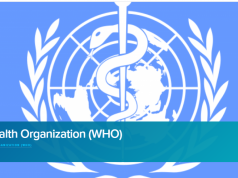Either way, the success acheived by Sweden is impressive and the rates contrast sharply with the 24% average smoking rate in Europe, a difference attributed to country’s progressive approach to tobacco harm reduction. Instead of prohibition, Sweden promotes safer nicotine alternatives such as snus, oral nicotine pouches, and vapes, supported by public education and a tax policy that keeps smoke-free products affordable.
Delon Human of Smoke Free Sweden highlighted this success as a global public health milestone, noting that Sweden’s strategy, which initiated in the 1960s when nearly half of Swedish men smoked, has significantly improved public health. Anders Milton, a Swedish physician, emphasized that legal access to a variety of safer nicotine products, alongside a proportional excise tax, have been key to achieving Sweden’s achievements.
Countries worldwide should be inspired by Sweden’s success
This reduction in combusitble tobacco use has also led to a 41% lower cancer rate than the EU average, as well as the lowest rate of tobacco-related diseases across the Union. Smoke Free Sweden argues that Sweden’s approach should inspire other countries, which continue to struggle with smoking, due to restrictive policies that limit access to effective harm reduction options. More importantly, being the first EU nation to meet the EU’s smoke-free goal decades ahead of schedule, it should serve as an example to the Union. This milestone, achieved through a progressive harm reduction approach, contrasts sharply with the EU’s projected delay, where many member states may not reach the goal until nearly 2100.
Tobacco harm reduction and smoking cessation experts worldwide have been commending Sweden’s strategy. Rather than banning these products, Sweden regulates and taxes them proportionally to their risks, encouraging smokers to switch to lower-risk alternatives. The World Vapers’ Alliance’s (WVA) Director, Michael Landl, highlighted that Sweden’s progressive approach, has saved lives and could offer a model for the EU to emulate.
The nation’s overall nicotine use rose from 18.5% in 2022 to 20.2% in 2024, in parallel with the decrease in smoking rates, showing a shift toward safer nicotine alternatives. Meanwhile, the EU remains committed to the WHO’s prohibition-oriented tobacco control policies, even as evidence shows these approaches often fail to reduce smoking rates effectively.
Why is the EU so intent on ignorning Sweden’s success?
Despite data indicating that restrictive measures, such as blanket bans on alternative nicotine products like the EU-wide snus ban, can drive users to black markets or keep them smoking traditional cigarettes, the EU aligns with the WHO’s hardline stance. This inflexible approach ignores research showing that harm reduction strategies, like promoting safer nicotine alternatives, could be more effective in reducing smoking-related harms. Sadly the EU prioritizes WHO compliance over adapting its policy based on real-world outcomes and public health data.
In contrast, Sweden’s success underscores the effectiveness of a harm reduction model, which aligns regulations with health risks and supports public health goals. In response, the WVA and tobacco harm reduction experts worldwide are urging the EU to replace its restrictive policies with Sweden’s consumer-friendly approach. Sweden’s low smoking rates serve as a powerful example of how regulatory flexibility, informed by scientific evidence, can advance public health across Europe.












